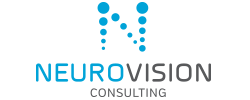With over 10 years of clinical sports performance research, our team of medical specialists have developed medically designed protocols for our client specific neurostimulation training program.
Our 2 hour baseline evaluates and analyzes:
- Binocular vision
- Oculomotricity (eye-tracking)
- Depth perception
- Visual exploratory strategy
- Trajectory perception
- Glare and contrasts
- Color perception
